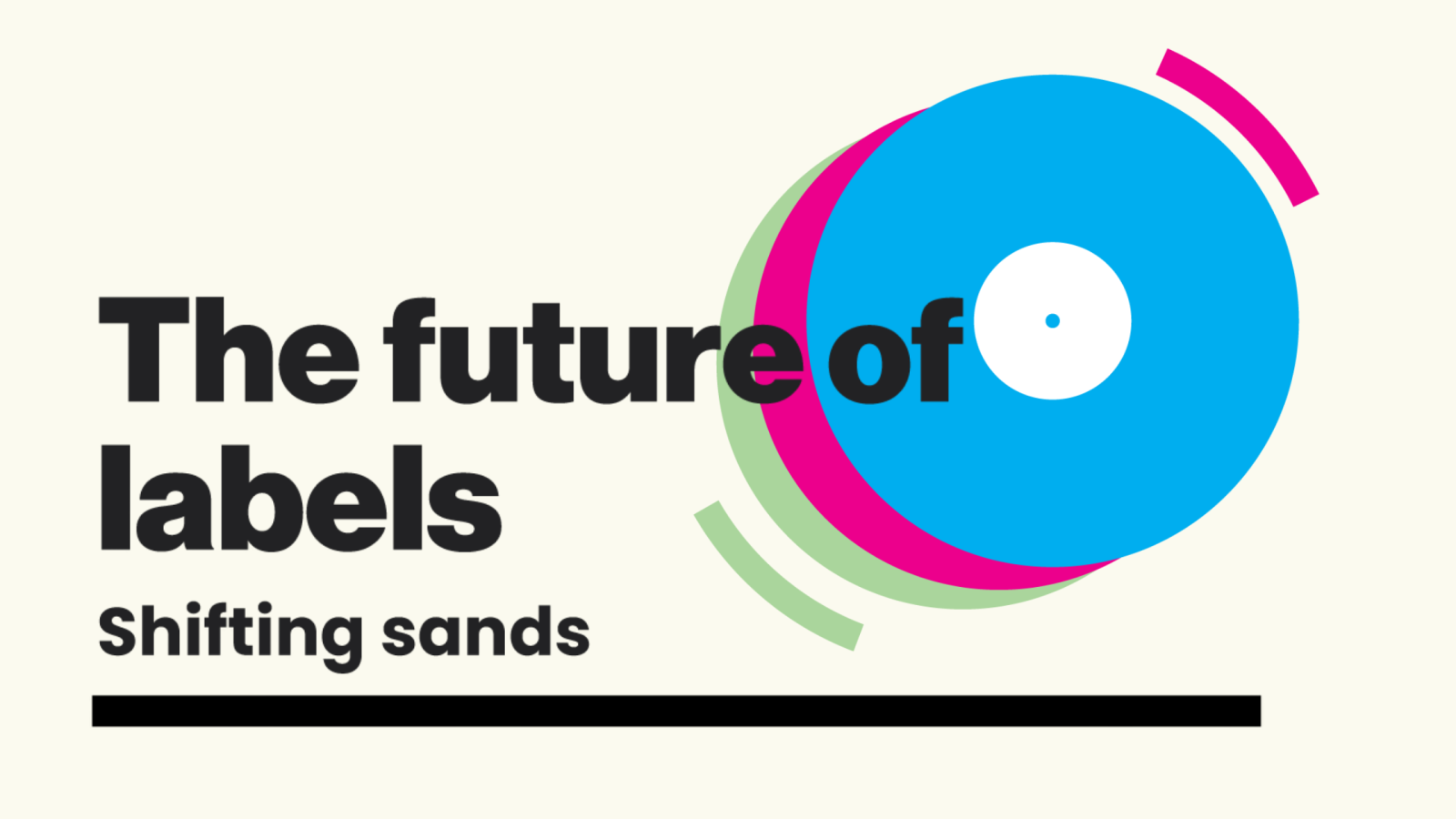The future of record labels: Shifting sands


The question of whether artists still need record labels never seems to fade from industry discussion. It has invariably surfaced in conference panels, think pieces, and behind-closed-doors conversations for years. Ironically, the lowered barriers to entry for creation and distribution make the types of services labels provide (marketing, artist development) ever more essential today. Yet that does not mean the business of being a record label has become any easier.
As with every other music industry sector, today’s record labels face disruptions across the board: consumers are harder to reach, new entrants are competing to supply similar services, business models desperately need diversification, and DSPs are steadily gaining negotiating power. With lines blurring between labels, distributors, and management (as well as “majors” and “indies”), some even believe we should do away with the terms entirely.
It’s clearly a sector that’s ripe for change – and for MIDiA’s new Future of.. series. We recently published the first of these reports, The future of music streaming: Change or be changed. Now, we are pleased to present its sister report, The future of labels: Shifting sands. While the ideas and recommendations are MIDiA’s own, we stress-tested them through background interviews with the CEOs and heads of leading global record labels and distributors. Here is a preview of our findings.
The case for change
Traditional record labels are no longer the only artist service providers in town – nor are labels’ services always the most innovative. While label muscle is still a clear advantage for things like playlist placement and license negotiation, no player is immune from today’s laundry list of challenges.
Meaningfully reaching audiences – and retaining their attention – is the nut no one can quite crack, and with social media paramount to this, artists have taken on much of the marketing burden themselves. Yet social media is no longer just marketing, with social video platforms increasingly competing directly for time spent streaming. The average consumer now spends more time weekly on social video than music streaming – and the former is growing faster than the latter, according to MIDiA’s consumer surveys. Superstars – major labels’ bread-and-butter – also don’t dominate like they used to, with BPI calculating that the share of total UK streams concentrated in the top 100 tracks dropped from 10.3% in 2016 to 3.8% in 2024.
This does not mean that there is any less pressure to produce immediate hits and capture as much market share as possible – especially for publicly-traded companies. The effect is that artist development is often rushed, if it happens at all. Generative AI doesn’t just threaten to make all of the above challenges worse; it already has.
While this analysis feels doom-and-gloom, it also holds a shining opportunity. Today’s complexity can feel overwhelming – the ability to guide artists through unpredictable and uncharted waters will be a key strength and differentiator for labels going forward.
The catalyst
Record labels have so far learned to thrive – at least financially – amid this change, with global recorded music revenues more than doubling between 2015 and 2024, according to MIDiA. However, the prevailing strategy that labels are currently pursuing is one of optimisation, which risks unpreparedness for the future.
As the saying goes, money talks. The financial impact of today’s cultural disruptions will be the true catalyst for change. Price rises won’t drive the next wave of monetisation alone, especially with 10% of consumers saying they would cancel their streaming subscription if prices continue to rise (source: MIDiA Research Q2 2025 consumer survey). The first six months of 2025 also marked three successive years of slowing H1 revenue growth rates for leading music industry companies. Not so for the leading streaming services, whose revenue growth in H1 2025 significantly outperformed that of labels. A rebalancing of the supplier-retailer relationship is at play, with revenue share and negotiating power accruing to music streaming services.
The S.I.N.G. innovation framework
With so many disruptions facing labels, from many directions, where to begin prescribing solutions? Our report introduces the S.I.N.G. innovation framework, laying out five key tenets that will guide labels through the years ahead (for more on this framework and to download your free summary, head to our Future of record labels mini-site).
Not all of the principles will apply equally to all types of labels, and as the first principle – specialise – indicates, that’s precisely the point. Most labels have developed a wide set of capabilities, income streams, and business models, and for some (particularly those with deep pockets) this makes sense. For most, though, doing a bit of everything makes it hard to do any one thing well. These labels should specialise. This does not mean cutting core capabilities, but rather leaning into core strengths and values. In fact, our report maps four core label types – market makers, distribution powerhouses, culture makers, and rights powerhouses. In a landscape defined by flux, the labels that thrive will be the ones willing to rethink their purpose, not just their playbook.
This is just a snippet of our recommendations, in what we believe is one of our most comprehensive and important reports yet. MIDiA clients can access The future of labels: Shifting sands now here. If you are not a client but would like to learn more about this report, check out the landing page here.

The discussion around this post has not yet got started, be the first to add an opinion.